Kentucky Butter Cake
This post may contain affiliate links. Read my full disclosure policy.
This old-fashioned vanilla butter cake drenched in syrup is the 1963 winner of the Pillsbury Bake-Off Contest.
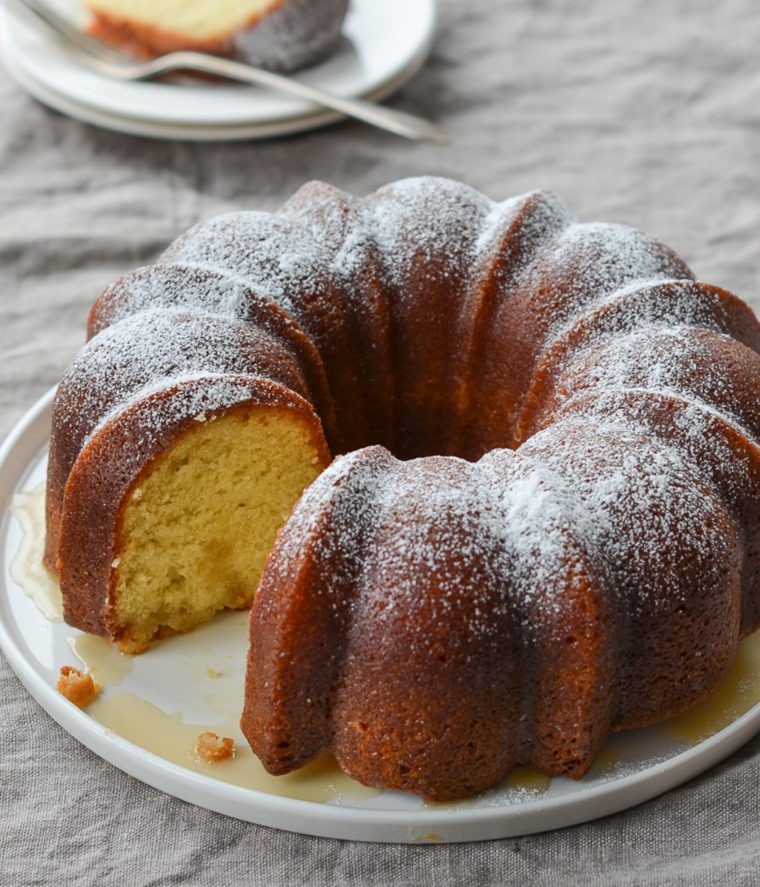
I have no clue why this delicious butter cake is named for the state of Kentucky, but the recipe has been around since at least 1963, when Nell Lewis of Platte City, Missouri entered it into the Pillsbury Bake-Off Contest and won. It’s an old-fashioned vanilla buttermilk pound cake drenched in a luscious butter and sugar syrup. The syrup not only adds exceptional moisture to the cake, but it also creates a crisp coating on the surface, almost like a glazed donut. Kids love it, grown-ups love it—this simple butter cake is hard to beat. A big thank you to my longtime reader, Karen Tannenbaum, for sharing the recipe with me.
What you’ll need To Make Kentucky Butter Cake
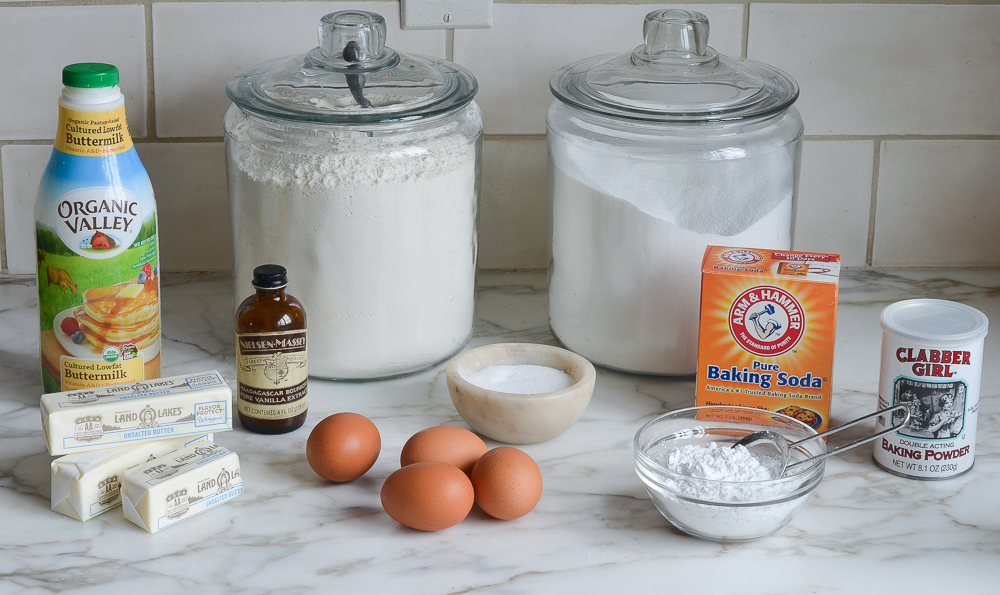
Before we get to the step-by-step instructions, a few words about the method. This butter cake is a “high-ratio” cake, which means that the weight of the sugar equals or exceeds the weight of the flour. Instead of the more common “creaming” method (where the butter and sugar are beaten together before the eggs, flour, and liquid are added), high-ratio cakes can be made using the “high-ratio” method, which involves mixing all the dry ingredients with the butter and some of the liquid first, then adding the remaining liquid ingredients.
The high-ratio method is not only easier than the traditional creaming method, but it also yields super tender and fine-textured cakes. (Other high-ratio cakes on the site include yellow cake, pound cake, rum cake, and marble cake.)
How to make kentucky butter cake
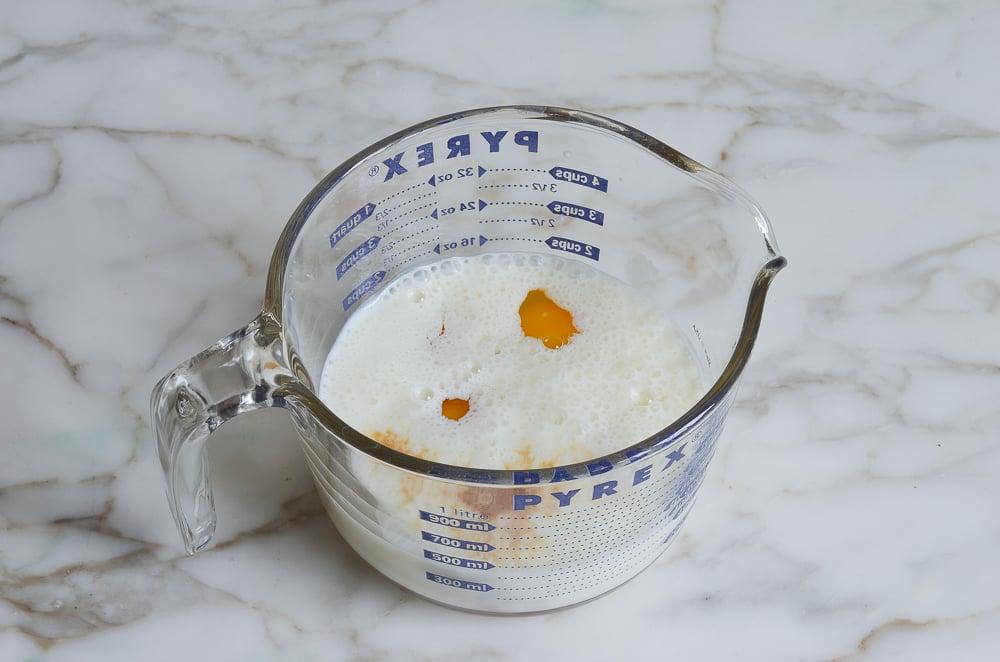 In a medium bowl or liquid measuring cup, combine the buttermilk, eggs, and vanilla.
In a medium bowl or liquid measuring cup, combine the buttermilk, eggs, and vanilla.
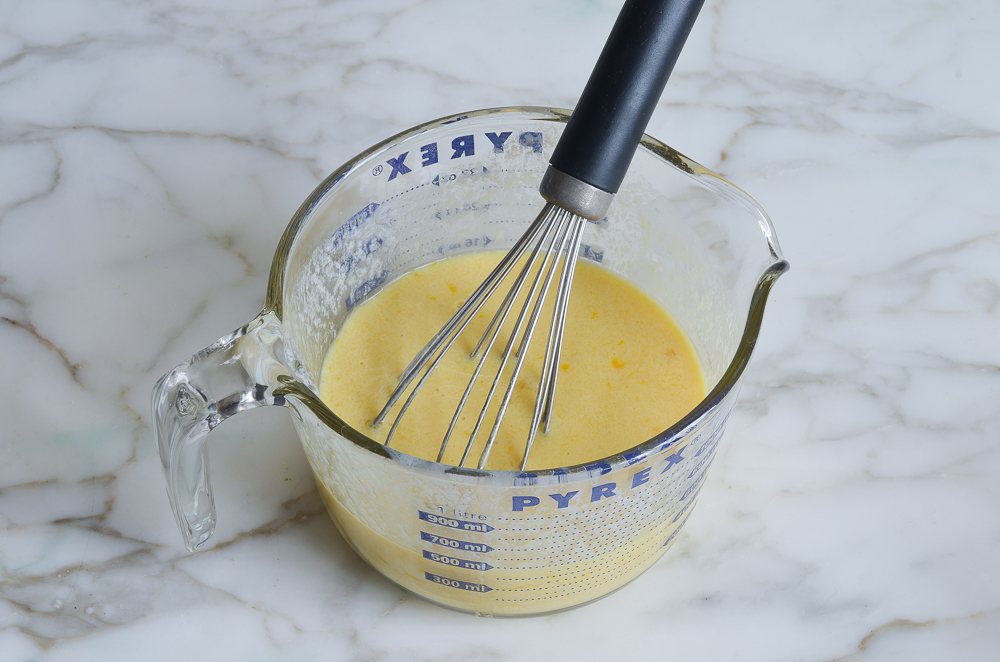
Whisk and set aside. (Note that the mixture will start to look curdled as it sits; that’s okay.)
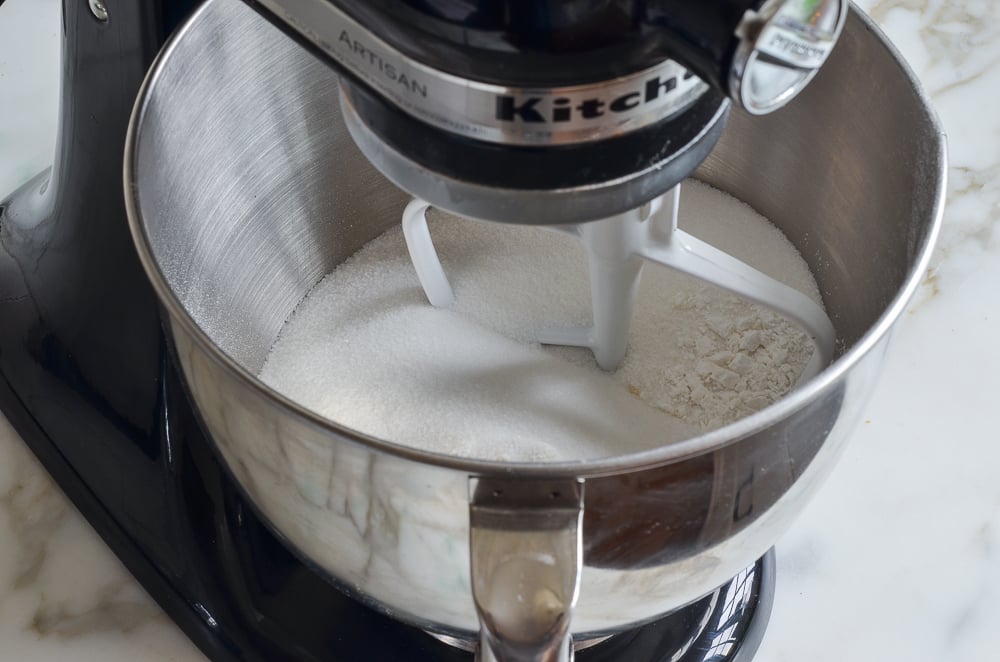
In the bowl of an electric mixer fitted with the paddle attachment or beaters, combine the flour, granulated sugar, baking powder, baking soda, and salt. Beat on low speed for 30 seconds to combine.
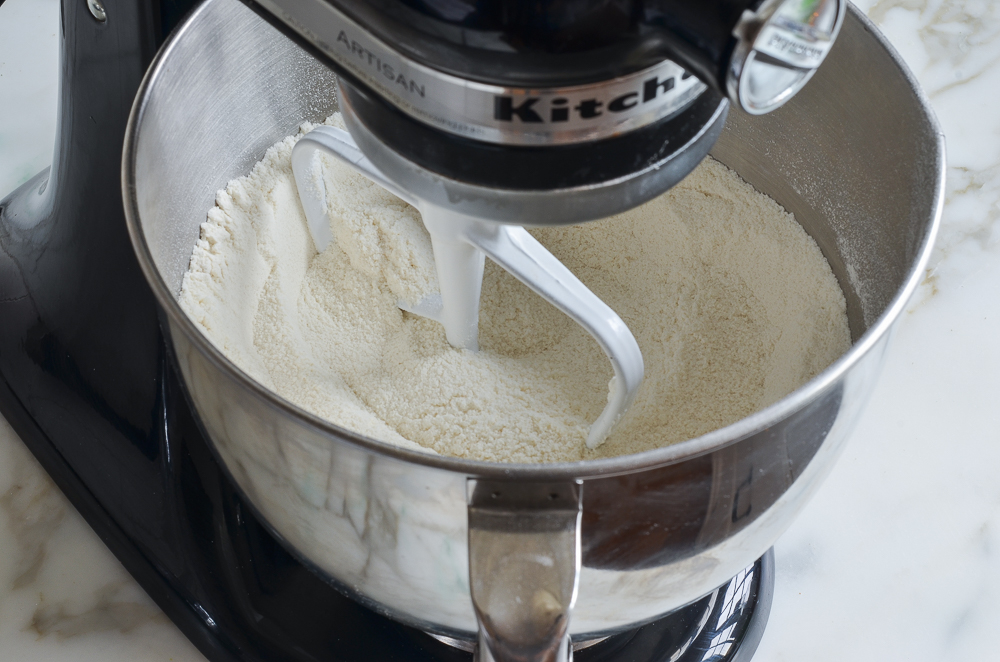
Add the soft butter and half of the buttermilk mixture. 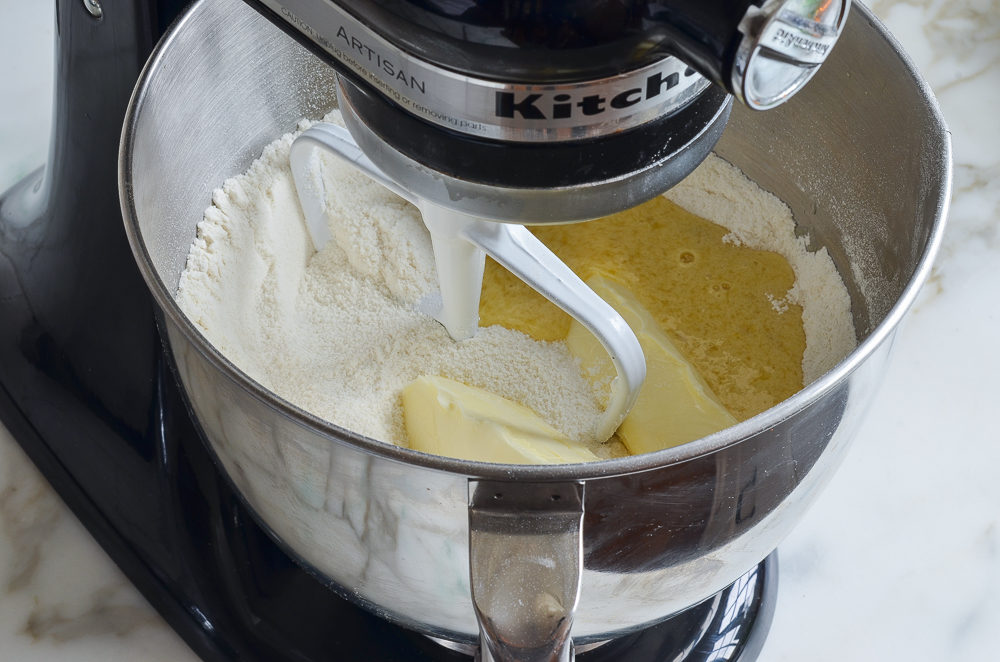
Mix on low speed until moistened but still a little crumbly, about 1 minute.
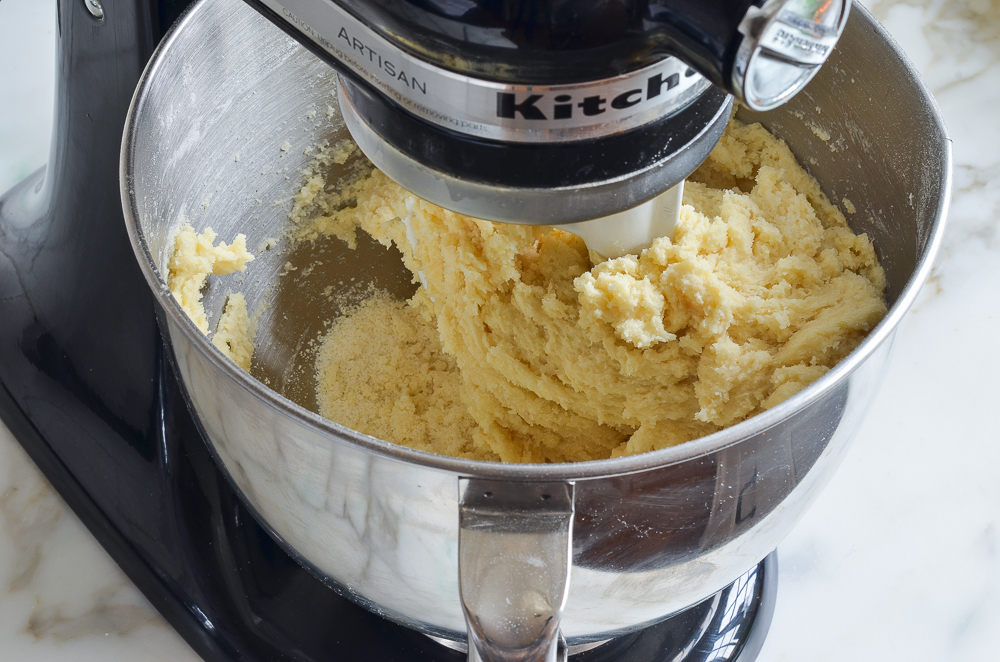
With the mixer running on low, gradually add the remaining buttermilk mixture.
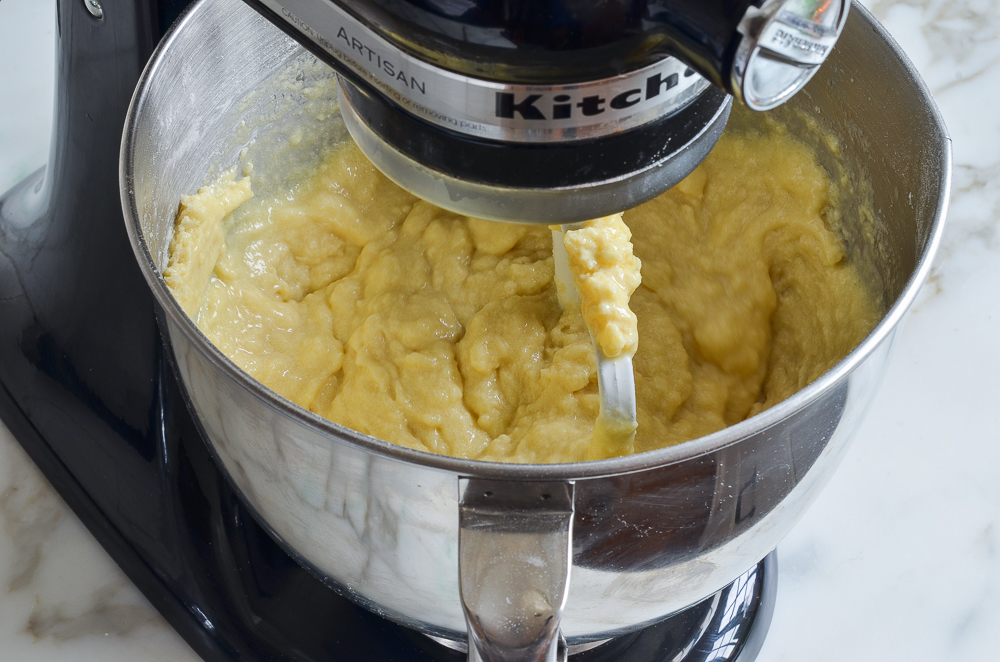
Increase the speed to medium and mix for three minutes, stopping once to scrape down the sides and bottom of the bowl with a rubber spatula. The batter should look pale and creamy.
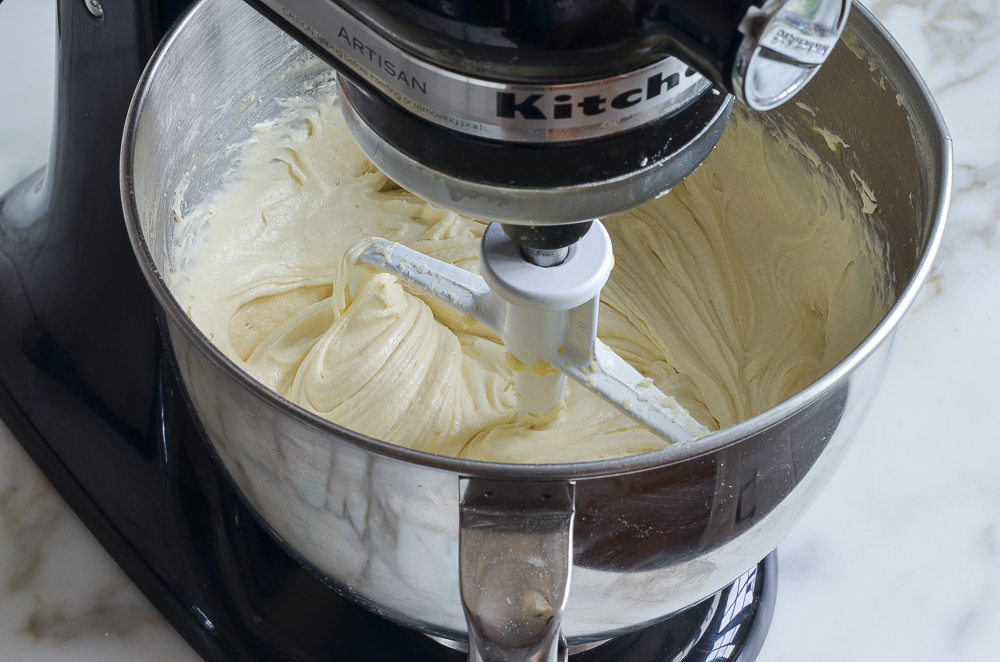
Transfer the batter to a Bundt pan sprayed with Baker’s Joy or Pam with Flour.
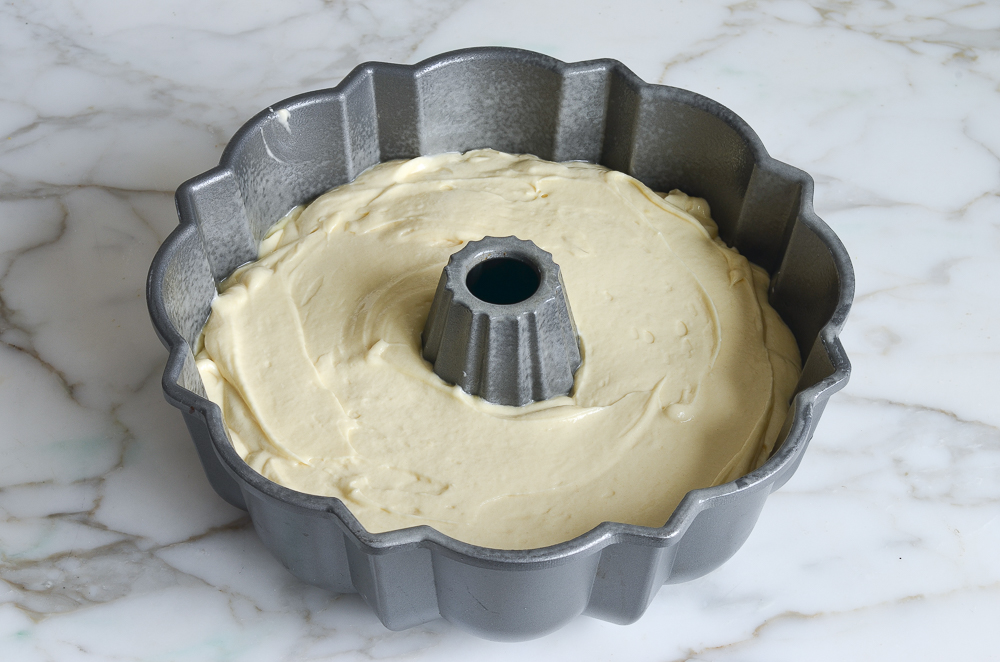
Bake for 1 hour, or until a cake tester comes out clean. Set the pan on a cooling rack.
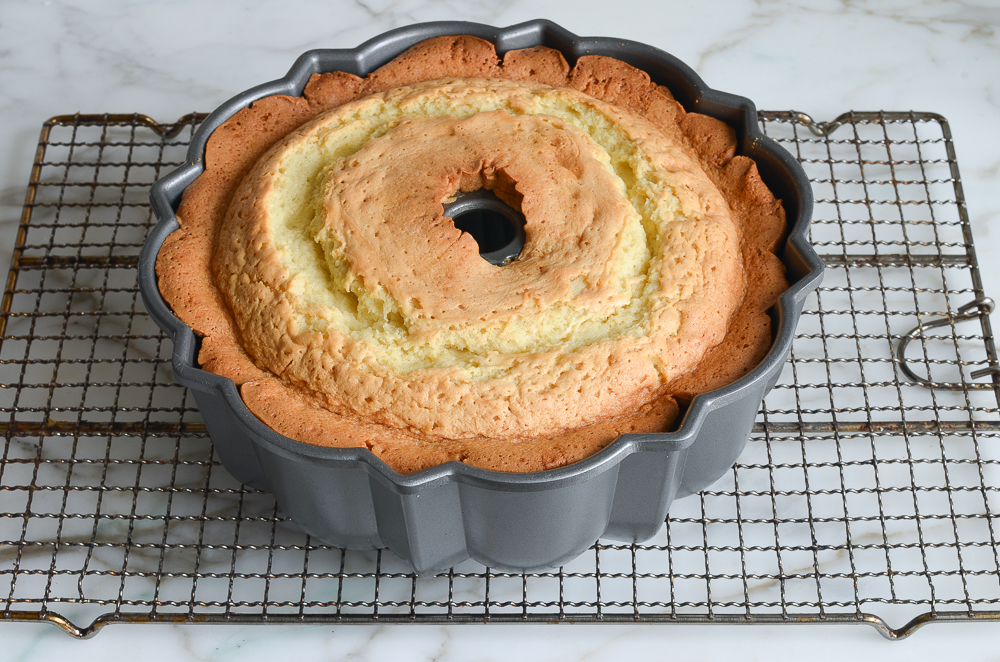
How to make the glaze
While the cake cools, make the glaze. In a small saucepan, combine the butter, granulated sugar, water, and vanilla.
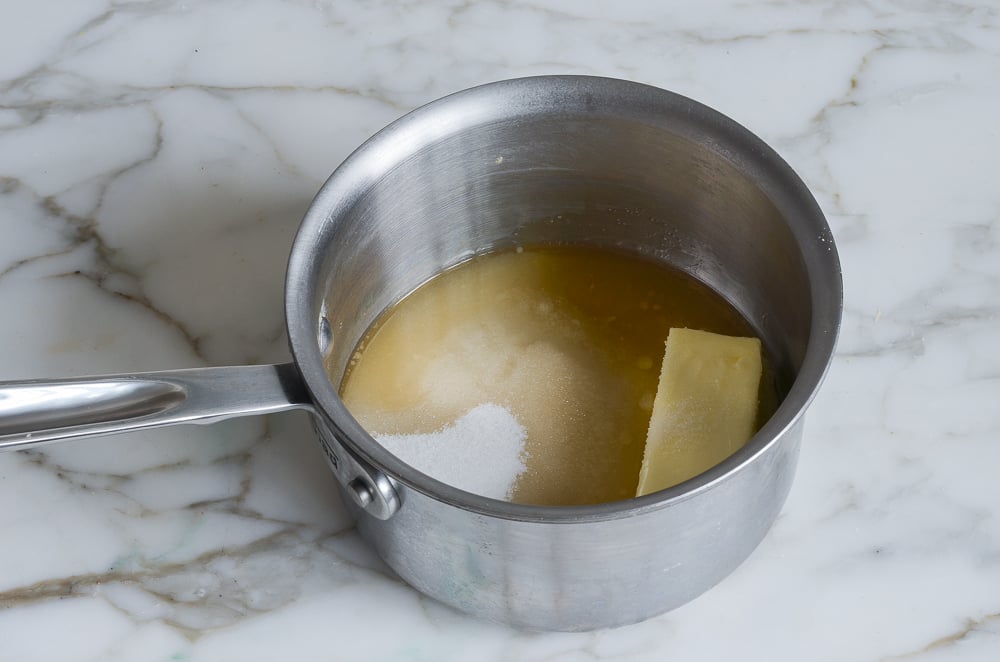
Bring to a boil, then reduce the heat and simmer until the sugar is dissolved, about 1 minute.
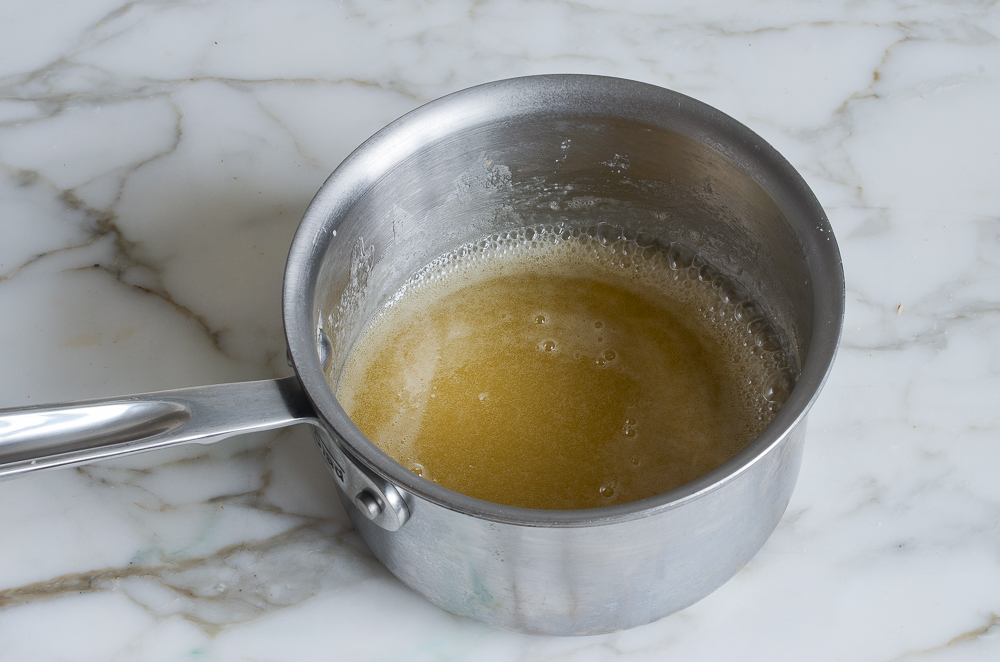
Using a skewer or toothpick, poke about 40 holes in the bottom of the still-warm cake, going about 3/4 of the way down.
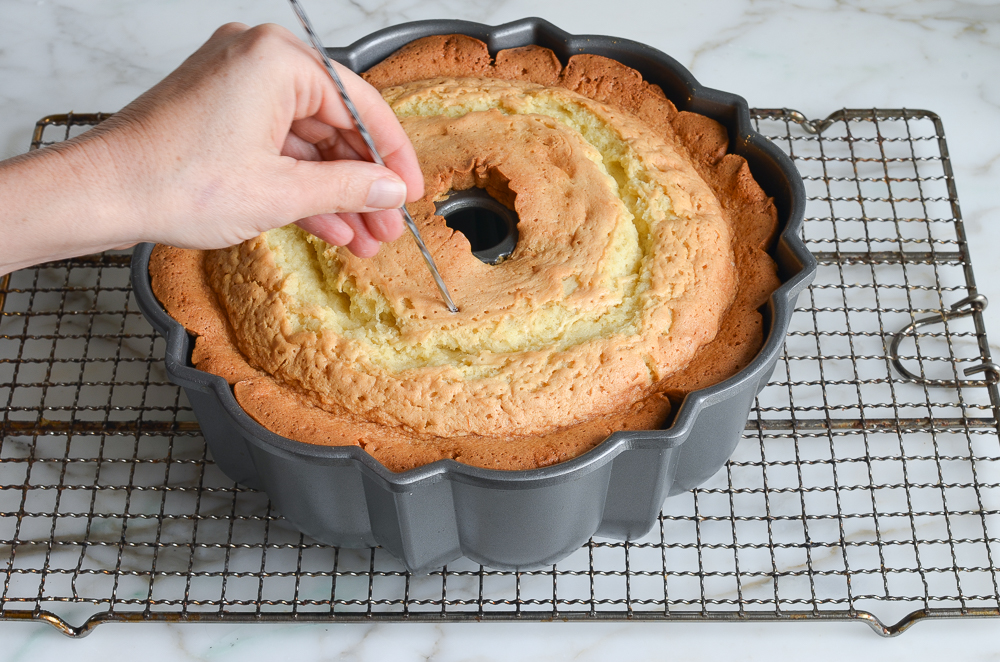
Spoon half of the glaze evenly over the bottom of the cake. 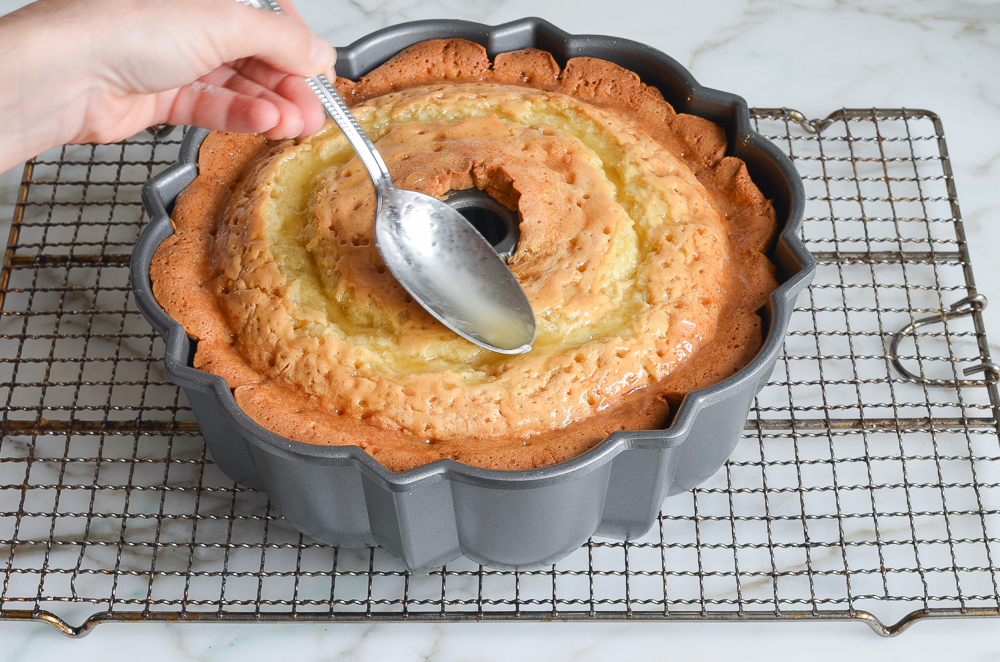
If the glaze starts to pool on the surface, poke more holes to help it sink in. Leave the cake on the rack to cool for 30 minutes.
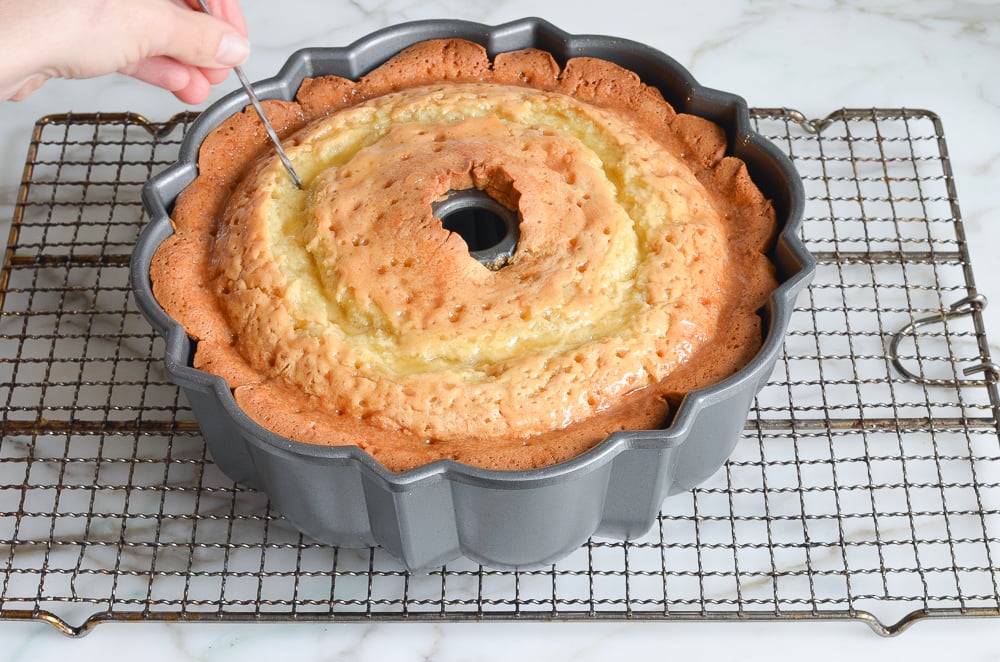
Invert the cake onto a serving platter.
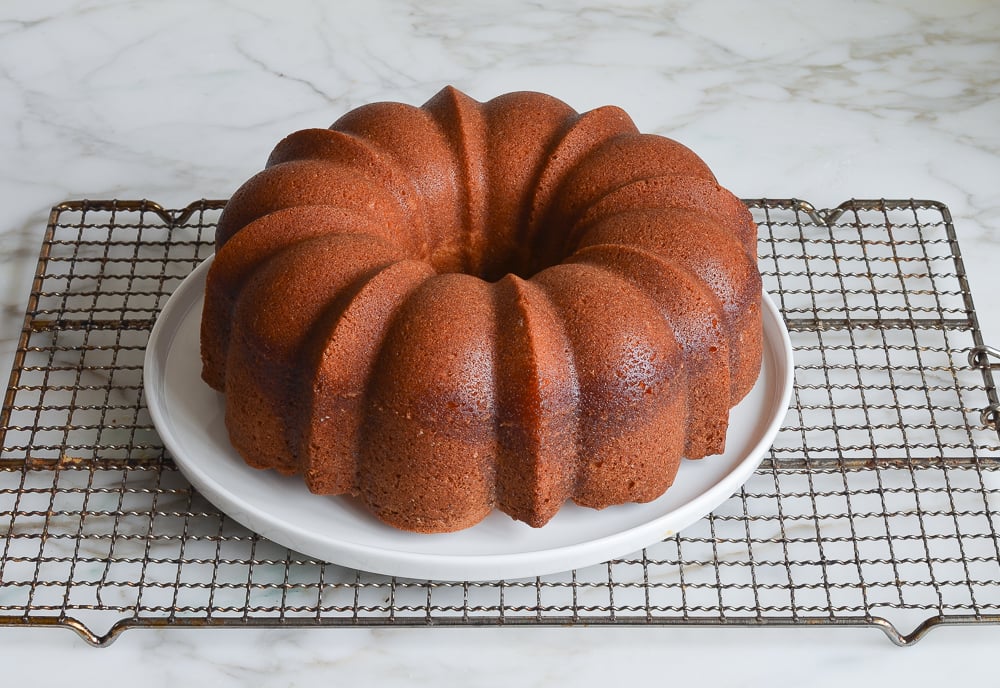
Brush the remaining glaze evenly over the top and sides of the cake, letting it soak in as you go. (Go slowly so that the cake absorbs the glaze.)
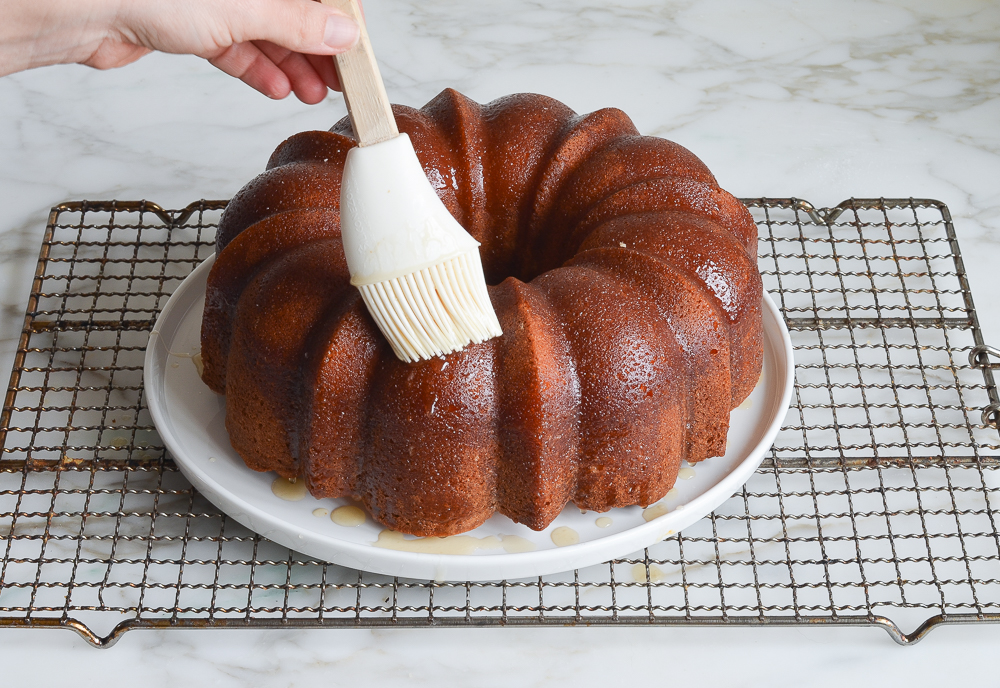
Let the cake sit for at least one hour before serving. Right before serving, use a fine sieve to dust the top of the cake with confectioners’ sugar.

You may also like
- Lemon Pound Cake
- Marble Cake
- Sour Cream Chocolate Chip Coffee Cake
- Rum Cake
- Sour Cream Coffe Cake with Cinnamon-Walnut Swirl
- Chocolate Bundt Cake
Kentucky Butter Cake
This old-fashioned vanilla butter cake drenched in syrup is the 1963 winner of the Pillsbury Bake-Off Contest.
Ingredients
For the Cake
- 1 cup buttermilk (see note)
- 4 large eggs
- 2 teaspoons vanilla extract
- 3 cups all-purpose flour, spooned into measuring cup and leveled-off
- 2 cups granulated sugar
- 1 teaspoon baking powder
- ½ teaspoon baking soda
- 1 teaspoon salt
- 1 cup (2 sticks) unsalted butter, softened
- Confectioners' sugar, for dusting
For the Glaze
- 5 tablespoons unsalted butter
- ¾ cup granulated sugar
- ¼ cup water
- 2 teaspoons vanilla extract
Instructions
For the Cake
- Preheat the oven to 325°F and set an oven rack in the middle position. Spray a 12-cup Bundt pan with nonstick cooking spray with flour, such as Baker's Joy or Pam with Flour.
- In a medium bowl, whisk together the buttermilk, eggs, and vanilla. Set aside. (Note that the mixture will start to look curdled as it sits; that's okay.)
- In the bowl of an electric mixer fitted with the paddle attachment or beaters, combine the flour, granulated sugar, baking powder, baking soda, and salt. Beat on low speed for 30 seconds to combine. Add the soft butter and half of the buttermilk mixture and mix on low speed until moistened but still a little crumbly, about 1 minute. With the mixer running on low, gradually add the remaining buttermilk mixture, then increase the speed to medium and mix for three minutes, stopping once to scrape down the sides and bottom of the bowl with a rubber spatula. The batter should look pale and creamy. Scrape down the sides and bottom of the bowl again, making sure the batter is evenly mixed.
- Transfer the batter to the prepared pan and bake for 1 hour, or until a cake tester comes out clean. Set the pan on a cooling rack. Using a skewer or toothpick, poke about 40 holes in the bottom of the still-warm cake, going about ¾ of the way down. Spoon half of the glaze evenly over the bottom of the cake. If the glaze starts to pool on the surface, poke more holes to help it sink in. Leave the cake on the rack to cool for 30 minutes.
- Invert the cake onto a serving platter. Brush or spoon the remaining glaze evenly over the top and sides of the cake, letting it soak in as you go. (Go slowly so that the glaze gets absorbed.) Let the cake sit for at least one hour before serving. Right before serving, use a fine sieve to dust the top of the cake with confectioners' sugar.
For the Glaze
- In a small saucepan, combine the butter, granulated sugar, water, and vanilla. Bring to a boil, then reduce the heat and simmer until the sugar is dissolved, about 1 minute.
- Note: If you’d like to make your own buttermilk, check out the easy method here.
- Make-Ahead Instructions: This cake keeps well for several days. Once cool, store in a cake dome (or cover with plastic wrap) at room temperature until ready to serve.
- Freezer-Friendly Instructions: The cake can be frozen for up to 3 months. After it is completely cooled, double-wrap it securely with aluminum foil or plastic freezer wrap, or place it in heavy-duty freezer bag. Thaw overnight on the countertop before serving.
Nutrition Information
Powered by ![]()
- Per serving (16 servings)
- Calories: 379
- Fat: 17 g
- Saturated fat: 10 g
- Carbohydrates: 53 g
- Sugar: 35 g
- Fiber: 1 g
- Protein: 5 g
- Sodium: 87 mg
- Cholesterol: 254 mg
This website is written and produced for informational purposes only. I am not a certified nutritionist and the nutritional data on this site has not been evaluated or approved by a nutritionist or the Food and Drug Administration. Nutritional information is offered as a courtesy and should not be construed as a guarantee. The data is calculated through an online nutritional calculator, Edamam.com. Although I do my best to provide accurate nutritional information, these figures should be considered estimates only. Varying factors such as product types or brands purchased, natural fluctuations in fresh produce, and the way ingredients are processed change the effective nutritional information in any given recipe. Furthermore, different online calculators provide different results depending on their own nutrition fact sources and algorithms. To obtain the most accurate nutritional information in a given recipe, you should calculate the nutritional information with the actual ingredients used in your recipe, using your preferred nutrition calculator.

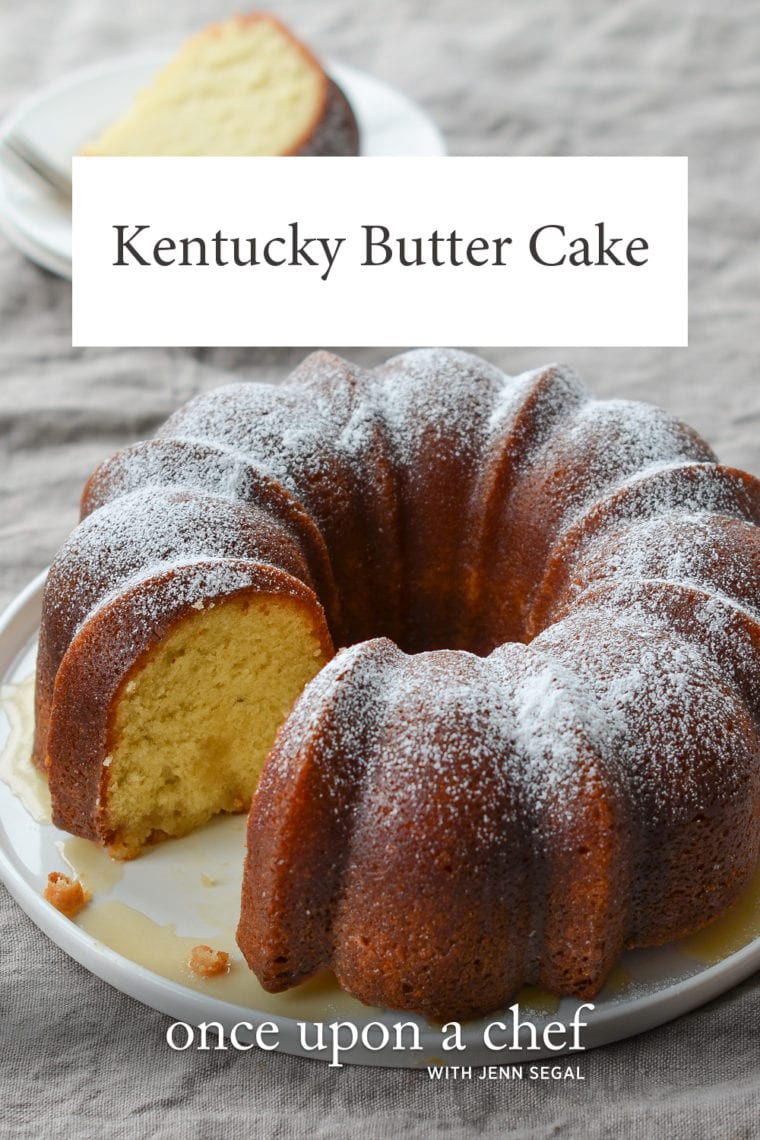
I made the cake yesterday and oh my! It was just as delicious as you said. Had trouble getting it out of the pan so it wasn’t as pretty as yours. Also, I omitted water in the glaze and substituted 1/4 c Bourbon. It was out of this world. Thank you Jen!
Thank you Jenn!
Sorry for misspelling your name.
Have made 4 times. Perfect every time, barely lasts a day. I have failed many times at pound cake. Which I don’t like but is a favorite of my brothers, this is perfection. Satisfies all. Good riddance pound cake. Thank you.
It looks like the original recipe pours all of the the butter sauce over the bottom of the cake whereas your recipe pours some over the bottom of the cake and then brush the remainder on the top. Was just wondering why this is adjusted? And is the top of the cake crunchy or moist after brushing it with the butter sauce? Thank you!
Hi Lisa, I tried it both ways and found that the cake is more balanced — taste and texture-wise — when you glaze both the top and bottom. The glaze leaves a delicious crunchy finish once dry, and I love that on the top as well as the bottom. It looks prettier when the whole cake is glazed, too. Hope that helps!
Once again, you are a master chef! Everyone in my bible study group LOVES your recipes- especially the sweets. I’ve converted all my friends to your recipes which needless to say very often show up at our potluck parties, too. 😁 Thank you for sharing your gifts and talents. Question #1 : How long to bake for 1/2 a recipe? Question #2: Out of curiosity, do ever plan to release another cookbook?
So glad everyone is enjoying the recipes, Laurie! For a half recipe, I’d start checking around 40 to 45 minutes but you’ll have to just keep an eye on it. As for a second cookbook, I’m thinking about it but no definite plans yet. I’d love to know what kinds of recipes readers are interested in… 🙂
Hello, I made this cake and it was delicious! I will be making it again in mini bundlets for Father’s Day. I learned last time not to fill the cake pan to the top when cooking. Do you recommend filling pans half full or 3/4 full prior to baking?
Hi Megan, Glad you liked the cake. You can fill the cake pans until they’re about 3/4 full. 🙂
Love this cake! It’s like eating a glazed donut. You’re my go to for recipes Jenn.
Do you have metric weight measure. Lacking this, should I just multiply the number of cups for the flour by 120 grams. I think (at least for the King Arthur AP flour 1/4 cup is 30 grams). Thanks. I’m going to make this tomorrow. Can you freeze this?
Hi Beck, I just added the metric conversions, so you’re good to go there. And, yes, the cake freezes nicely. Hope you enjoy!
I made this Butter Cake yesterday and there’s just a little left! It’s so good! My son took a bite and said “Mom! This is amazing!” I’m definitely going to make this again. It took longer for the syrup to soak into the cake because the cake cooled down (laundry), so apply when warm for the best results.
This recipe is very similar to a cake my mother made for holidays. It never lasted for a second day. Thank you for sharing your recipe as most of my mother’s disappeared when moving.
Hi, Jenn. I love your recipes! But I always wonder what kind of salt you use in your recipes, table, kosher or sea salt? I know it can make a difference, especially in baking. Thank you!
Hi Christine, Glad you like the recipes! 🙂 If my recipes just call for salt, table salt is appropriate. I will always specify if you need something other than that like sea salt or kosher salt. Hope that clarifies!
Hi! This cake looks amazing but I don’t have any buttermilk…I’m going to improvise…would you suggest milk mixed with a bit of lemon juice or white vinegar? Thank you Jenn for all you do to make home chefs look like pros!!!
Yep, that will work. See here for the ratio of milk to lemon juice. Hope you enjoy! 🙂
What are the high elevation (6,000′) instructions?
Hi Christine, I don’t have experience baking at high altitudes so, unfortunately, I don’t have any wisdom to share – I’m sorry! You may find these tips helpful though. 🙂
Made this cake completely gluten free with 1-1 flour and it turned out delicious!!! Just wanted to share.
I made this cake this past weekend and it is absolutely delicious. It is definitely a keeper.
Following a reader’s suggestion I added some whiskey to the syrup. A nice flavor combined with the vanilla.
I wanted to thank you for your website and all the delicious recipes. It is my go to.
Hi Jen,
First, this cake looks SO good, I think I may try and make it for Easter. Next, I would love to know where to find the cake plate you used for this cake in the photos. Thanks so much!
I wish I could help, but I don’t recall where I got that plate – so sorry!